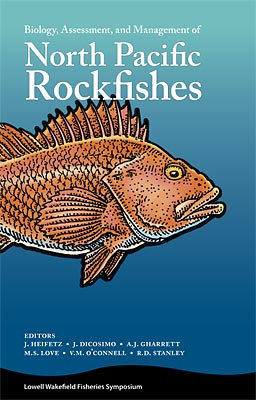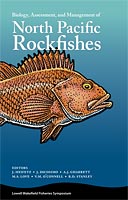
Evaluation of rockfish (Sebastes spp.) population declines from microsatellite data
S.R. Narum
- Price: $2.10 Sale: $0.00
 This is part of Biology, Assessment, and Management of North Pacific Rockfishes
This is part of Biology, Assessment, and Management of North Pacific Rockfishes| Format | Price | |
|---|---|---|
| PDF download [245.7 KB] Bypass cart and download |
Free | Add to Cart |
Description
Rockfish (genus Sebastes) have been a heavily targeted fishery on the west coast of North America for several decades. Eighteen species of rockfish were tested for evidence of reduced population size using microsatellite data from recently published literature. Long-term effective population size was calculated from expected heterozygosity, and indicated species with lowest effective sizes were S. borealis (1,299 SE ± 67.9), S. ruberrimus (1,339; point estimate), and S. paucispinis (1,369; SE ± 36.9). However, effective size values varied greatly depending on mutation rate (slow, medium, and fast rates) and mutation model (stepwise versus infinite allele) chosen. Values of M ratio (number of alleles/range of alleles) were calculated to provide an additional parameter to evaluate reduced population size. Bocaccio rockfish (S. paucispinis) had consistent M ratios and Ne suggestive of significant reductions in population size at all sites, while three other species (S. caurinus, S. maliger, and S. borealis) had evidence for reduced population size at individual sites. This study confirms that some species and populations of rockfish are declining and have reduced genetic diversity. Species of greatest concern correspond to those that have been most heavily targeted for commercial and recreational harvest (i.e., S. paucispinis), but life history also appears to influence susceptibility to decline.
Item details
- Item number: AK-SG-07-01j
- Year: 2007
- DOI: https://doi.org/10.4027/bamnpr.2007.10



